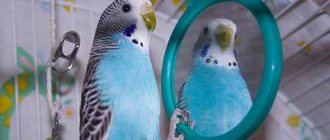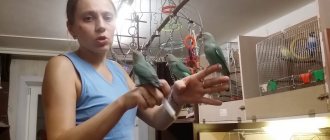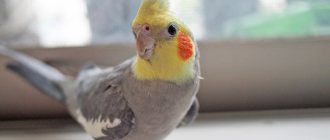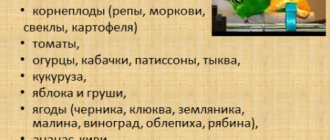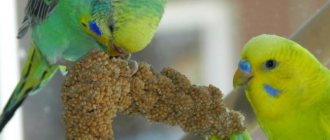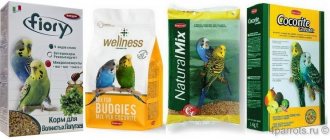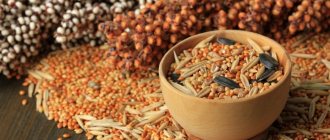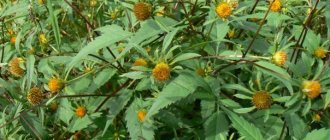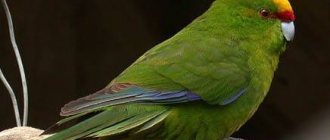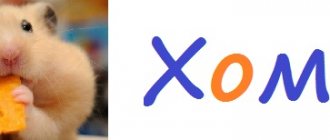Sprouting is one of the best and most affordable ways to provide birds with natural nutrition. The benefits of sprouts are incredible.
Dry seeds provide all the nutrients, energy and information needed to become a plant. This way, when the seeds germinate, they have the nutritional value of the plant, but in a more concentrated form. The miniature sprout contains a huge “package” of useful substances for the parrot.
Seeds, in addition to their full potential for the future plant, also contain protective mechanisms that ensure their preservation. Including toxins, enzyme inhibitors that protect them until they begin to germinate. The seeds also contain fats, which are used to provide the sprout with energy for growth.
The sprouted seed gets rid of toxins, burns unwanted fat and turns from one type of food to another, more nutritious one. Sprouts contain vitamins A, C, E, B, minerals, amino acids, proteins, antioxidants, which protect the body of birds and are a means of preventing diseases.
The sprouts are literally “stuffed” with enzymes. These enzymes contribute to almost complete digestion of food. Research shows that in the first seven days of germination, the sprout contains 100 times more different enzymes than a fully grown plant.
You don’t have to be an experienced gardener or have sophisticated equipment - seeds can be germinated at home using simple equipment.
There are different sizes and types of seeds available for every size bird. I will give an example of three types of seed mixtures for different groups of parrots (large, medium and small). The mixtures are formulated taking into account both the size of the seeds and the balance of nutrients and calories.
Below are some parrot formulas offered by sproutpeople.org. All these mixtures for germination are not difficult to make yourself.
Why do we need greens in the diet of parrots?
Wild parrots have an active lifestyle, and they get a significant part of their food by eating seeds, edible fruits and plants that are rich in microelements and low in calories. Under natural conditions, overweight individuals do not survive. Pets are sedentary, and their main food is grain feed. All this leads to weight gain, decreased immunity and vitamin deficiency. To avoid this, grass feed is added to the bird’s diet, since no commercial complex can be a complete replacement for a natural source of important microelements.
Why does a parrot need oats?
As I already said, sprouted grains have a number of medicinal benefits for poultry health. The seeds contain all the necessary nutrients, B vitamins, macro- and microelements. They are preserved during germination and take on a more concentrated form.
Daily consumption of oat pards will strengthen your pet’s immunity and increase the body’s protective functions. Eating fruits is of great importance for the prevention of infectious and colds. It is necessary to improve the functioning of the gastrointestinal tract.
Growing oats without soil
Seeds contain:
- fats;
- antitoxins;
- enzyme inhibitors.
The sprouted plant contains no harmful components. The sprouts form ingredients that protect the bird's body and prevent the development of diseases.
Read also
Can a budgie eat a walnut?
These include:
- vitamins A, B, C, E;
- amino acids;
- antioxidants;
- minerals;
- proteins.
They contribute to the complete absorption of food. Add oats to mixtures of vegetables, fruits, and porridge. You can simply feed it to the birds, placing it in a separate container.
In the first week of germination, the product contains 100 times more nutrients than in the grown plant.
Grass for parrots
In spring and summer, fresh grass can be found on the nearest lawn, but not all plants are useful for parrots, and some are dangerous. In order not to harm your pet and satisfy the need for minerals, you need to know which greens can be given to parrots and which are contraindicated for them.
Which one is possible?
The list of edible plants is extensive. Many of them are accessible and familiar from childhood.
- Clover leaves are rich in carotene, phytoestrogen, oils and fiber. It helps to develop fully, prevents inflammatory processes, and has a hematopoietic effect. This is a good natural antiseptic. The parrots are fed freshly picked meadow and creeping clover.
- Plantain normalizes the functioning of the digestive system and is famous for its medicinal properties, in particular, its anti-inflammatory effect.
- Woodlice improves the functioning of the circulatory system and strengthens the skin.
- Young shoots of dandelions ensure the parrot’s full development and rapid growth. The main thing is not to collect greens from polluted urban areas and make sure that the plants are fresh, without traces of insects or diseases.
- Coltsfoot is an essential greenery for budgies. It is full of vitamins and minerals important for the proper functioning of the respiratory, cardiovascular and nervous systems.
- Wheat sprouts protect against anemia, food poisoning, skin diseases and parasites. This herb neutralizes the consequences if a bird pecks at sorrel or spinach.
- Barnyard grass, or chicken millet, is a complete source of iron, B vitamins, phosphorus and potassium.
- Until recently, it was believed that parsley was not useful and even harmful. Research has refuted these beliefs and proved that we are talking about the root of the plant. Veterinarians advise introducing parsley into the poultry diet in small quantities as a source of antioxidants and essential amino acids.
The list of recommended herbs includes nettle, chicory herb, shepherd's purse, beet tops and lettuce. You need to be careful with spinach: this herb contains oxalic acid, so you should give your parrot little by little.
Mix for medium parrots.
Sunflower (seeds), wheat, spelt (wheat variety), kamut (wheat variety), triticale (wheat-rye hybrid), barley, oats, millet, buckwheat (unhulled), brown rice, green lentils, crimson lentils, French blue lentils and red lentils, adzuki beans, mung beans, black chick peas, brown chick peas and small beige chick peas, green peas, split peas (asparagus), peas, fenugreek, brown and golden flax, alfalfa, red clover, oriental mustard, daikon radish , Chinese radish (Misato Rose Flash), sesame (sesame), quinoa.
How to properly give grass to a parrot
Poultry should be accustomed to green food from an early age. The younger the parrot, the more willing it is to try new food. It is important to remember that feathered friends, like their owners, have their own tastes and preferences.
If your parrot flatly refuses to try plant foods, you can play with the size, shape or texture of the offered grass:
- Leaves lying near the feeder will attract the attention of a curious parrot.
- Greens on the bars of the cage, hanging at the level of the beak, will be eaten in most cases.
- If there is another bird in the house that eats grass with pleasure, the parrots’ habit of repeating after others will come in handy. After watching your friend, he will also become interested in green food.
Mixture (Doctor) for birds with allergies.
Adzuki beans, mung beans, millet, buckwheat (unshelled), green peas, split peas (asparagus), green peas, green lentils, raspberry lentils, French blue lentils, black lentils, red lentils, orange lentils, and yellow lentils, black chickpeas and small beige chick peas, fenugreek, alfalfa, red clover, oriental mustard, daikon radish, Chinese radish (Misato Rose Flash),
Author Svetlana Gerova
first published in the group “I love parrots”
Collection and storage
It is not enough to know which plants are beneficial to the parrot and which will harm the bird. Wild herbs must be collected correctly, and purchased herbs must be stored:
- Do not pick off grass growing along the roadway or railway tracks; It is better to choose a location on a park lawn, a forest strip, a field or a meadow.
- Plant leaves should be dense, even in color without spots or darkened edges.
- It is worth giving preference to young greens: they have a more delicate structure and not as bright a taste as ripe leaves. But it’s better to observe the parrot’s reaction; perhaps a particular bird will have a different opinion.
- The bird's diet should be varied, so it is better to pick/buy several leaves of five or six herbs than to bring a bunch of one.
- The greens are washed under running water rather than soaked, so as not to lose beneficial vitamins.
- The herb should be stored in the refrigerator for no more than five days in a plastic food container. The bundle must first be wrapped in a damp paper towel and sprayed regularly to prevent it from drying out.
Sprouted grain for cockatiels
Sprouted grains should be on the menu of every pet parrot. But this is rather an additive to the main food. You cannot give your cockatiel only greens, even though such sprouts contain a huge amount of useful amino acids. This food is easily digested by the bird’s digestive system, but if diarrhea is noticed, it is better to hold off on eating sprouted grains.
You also need to give your parrot swollen grains; they contain enough useful substances to provide your feathered pet with energy and vitamins. As soon as a sprout appears from the grain, the amount of useful components decreases, turning into greens. If the stem is more than 13-15 mm, then the grain is not suitable for feeding cockatiels. A teaspoon of this product per day is enough; more can cause diarrhea.
Grains for germination are purchased at pet stores or can be selected from your parrot's food. You can also pour water over the fruits of legumes, mung beans, chickpeas, lentils and alfalfa. It is prohibited to use seedlings that are sold for planting in the garden. They are treated with chemicals to increase shelf life and protect the weakened sprout from parasites and insects. Such additives will negatively affect the bird’s body.
To germinate grains for your cockatiel parrot, you need to prepare a plastic container. Small holes are made in it. In health food departments you can find ready-made containers for sprouting grains. Before germinating the grains, they are washed with water at room temperature and then poured into a container. After a few hours, the water is drained and the grains are placed in a container with a paper napkin. Now you need to wait for the first shoots to appear before offering them to your cockatiel. To slow down growth, you can place containers of grains on the refrigerator door.
How to grow grass for parrots at home
To ensure fresh greens even in winter, the owners grow them at home. Usually buckwheat, wheat, rye or oats are sprouted. To do this, the washed seeds are soaked for half an hour, after which those that do not sink to the bottom are removed. Next, pour a centimeter layer of shavings into a wide container (it is recommended to take shavings of fruit trees to avoid unpleasant consequences for the health of the parrot), and the soaked seeds are distributed on top in an even and dense layer. This is covered with sawdust, watered with warm water and covered with film, and the container is placed in a warm place. The first shoots can be expected in three to four days, and within a week your pet will have young and fresh greens.
Plant food will add vitamins to the parrot, compensate for a possible lack of minerals due to a monotonous diet, and the low calorie content will prevent excess weight gain and help the pet stay active.
Source
Mix for large parrots.
Almonds (hulled), sunflower seeds, wheat, spelled (wheat variety), kamut (wheat variety), triticale (wheat/rye hybrid), barley, oats, millet, buckwheat (unhulled), brown rice, green lentils, crimson lentils , French blue lentils, red lentils, adzuki beans, mung beans, black chick peas, brown chick peas, large beige chick peas, green peas, split peas (split peas), blue and yellow corn.
The photo shows a mix for red-tailed gray Coco Alisa Iannou.
Growing grass
Moderator: Gypsy
Growing grass
Baby » 08 May 2012, 23:59
Re: growing grass
Wasti » May 09, 2012, 00:08
Forum rules, rules of the “Diseases” section - ignorance of these rules does not exempt you from responsibility and sending any message to the conference automatically means your agreement with the rules!
The cornea is located in the eye, the cere is located above the beak. Budgerigars do not nest without a stimulus, with the exception of illness. Parrots don't kiss, they feed each other.
Re: growing grass
by Vitaminka » May 09, 2012, 00:08
Re: growing grass
Baby » May 09, 2012, 00:12
Re: growing grass
Wasti » May 09, 2012, 00:13
Forum rules, rules of the “Diseases” section - ignorance of these rules does not exempt you from responsibility and sending any message to the conference automatically means your agreement with the rules!
The cornea is located in the eye, the cere is located above the beak. Budgerigars do not nest without a stimulus, with the exception of illness. Parrots don't kiss, they feed each other.
Nikolay » June 20, 2012, 16:21
Re: Growing grass
Wasti » June 20, 2012, 04:32 pm
